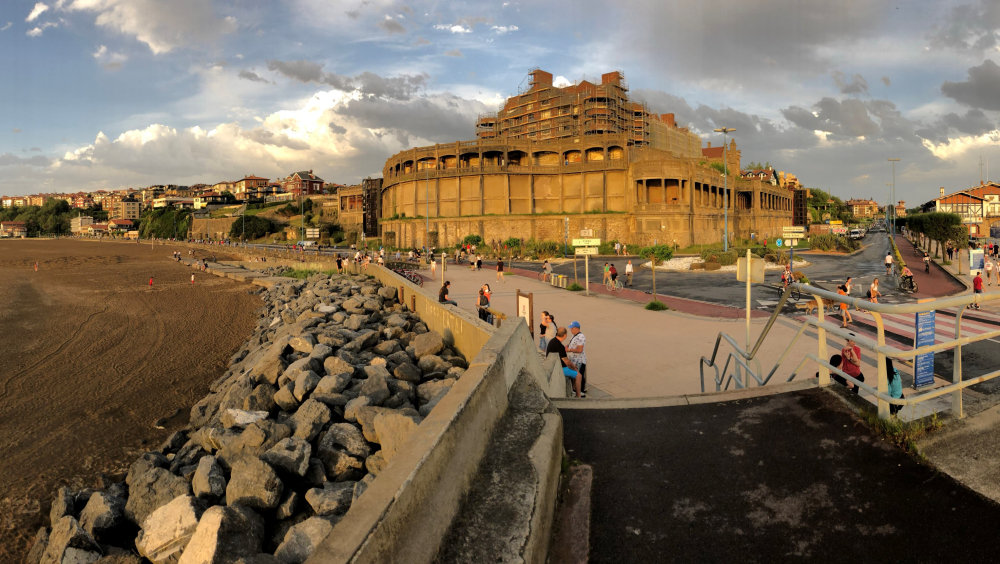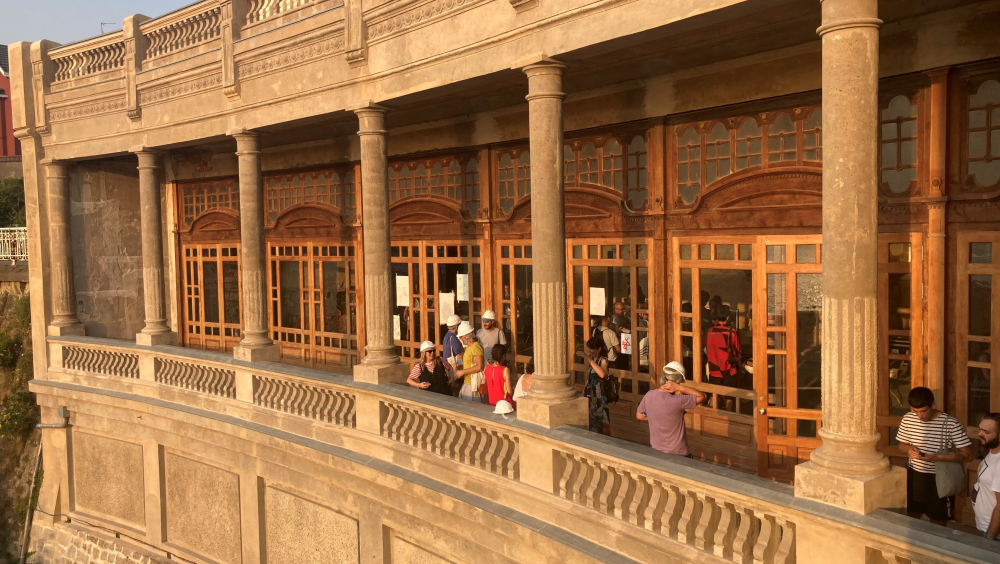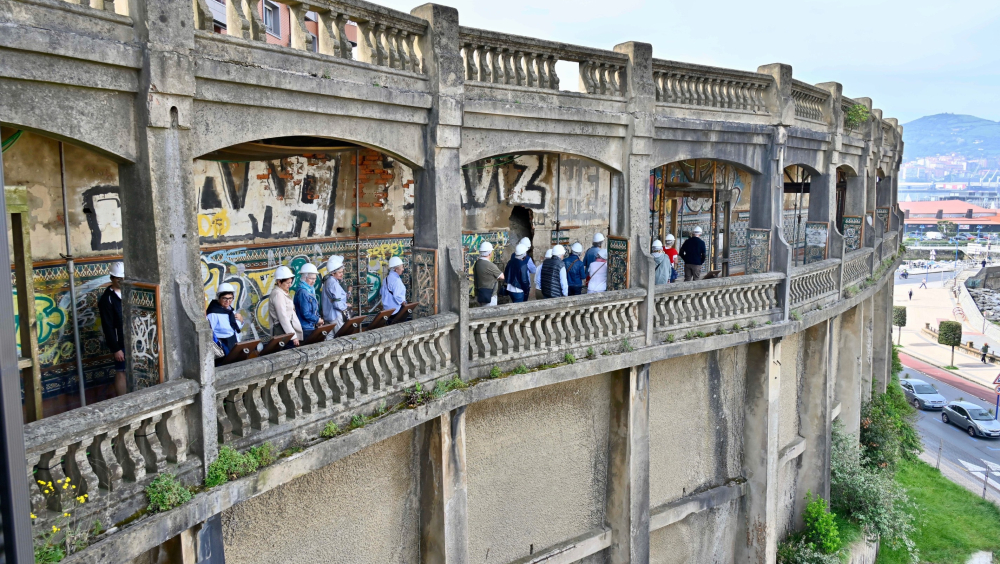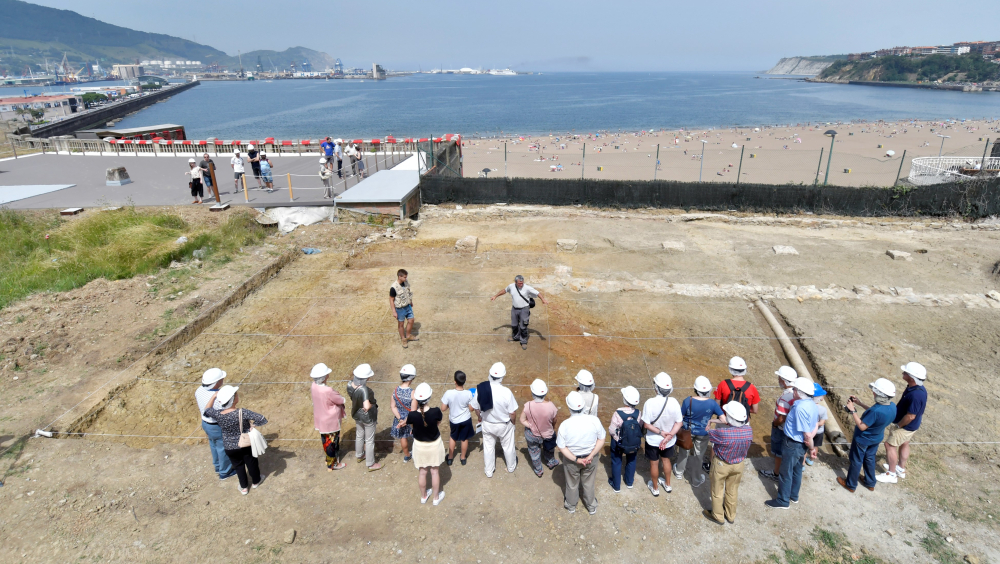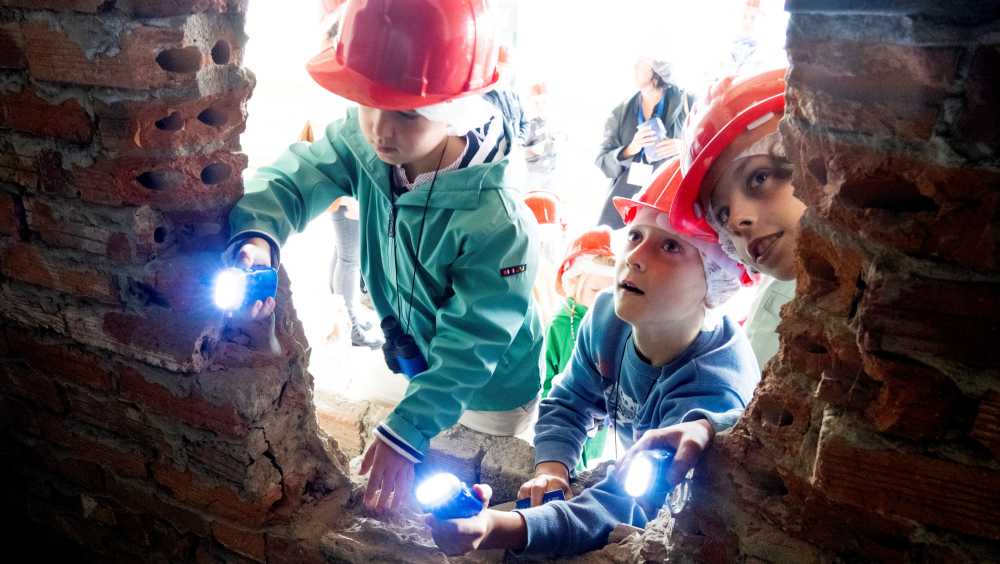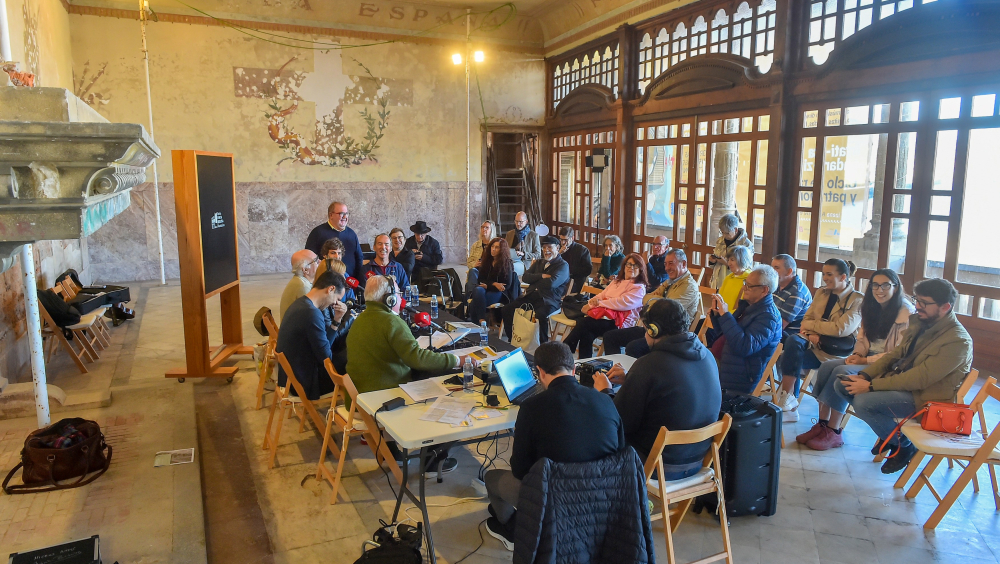Punta Begoña, belvedere for History
Horacio Echevarrieta, described as the greatest businessman in the history of Spain and one of the most important in Europe for decades, defied crises, wars and pandemics. He created an economic emporium that amazed the world: hydroelectric plants, construction, mines, shipping companies, railways, subways, oil, airlines, submarines, jet engines, media... While he was a patron of artists, a philanthropist, a defender of workers and even a rescuer of prisoners of war in Africa.
“I would get rid of any of my properties, except Punta Begoña”.
On the cliffs that surrounded his house, he wanted to build the belvedere that would reflect his way of being: strength, balance, effort, love for art and passion for beauty.
His criterion in life was to work with the best, and Ricardo Bastida, a prolific, innovative, prestigious architect interested in traveling, would be the one to solve that complex technical challenge and create a monument to the exaltation and contemplation of landscape.
In order to achieve that goal, they searched throughout Europe and the world for technical and material improvements that would make this dream a reality.
As a result, Punta Begoña Galleries emerged in 1922, as “one of the most interesting historical capsules in Spain”.
A century later these galleries are being restored following a process based on exhaustive research transferred to society, citizen participation through visits to the works and cultural and educational activities, and the criterion of social function of heritage.
The innovation of past endures today to the point that the open restoration of Punta Begoña Galleries has been certified as a pioneering project in compliance and effectiveness of the Sustainable Development Goals.
“History is a constant starting over”
Thucydides, historian. 5th century B.C.
Punta Begoña has always been a place chosen by History.
Traces and fossils from 65 milion years ago are located in the flyschoid cliff on which the monument that dominates the Cantabrian sea from Getxo stands.
Meanwhile, its gardens own a Chalcolithic site, dating back 4,800 years, which possibly corresponds to one of the first open-air settlements in northern Spain.
During the 17th century and later, Punta Begoña housed a defensive fort for the protection of the city of Bilbao and its trade with Europe. And after that, a lazaretto where sick people from overseas were confined.
In the early years of the 20th century, an exceptional character settled in Punta Begoña.
“If Horacio Echevarrieta had been born in Pittsburgh, we would have probably associated his figure with that of a well-known Hollywood actor as the protagonist of a film based on an extraordinary life (…) It is striking that a character who, with due caution, could well be compared to Howard Hughes or Randolph Hearst, who inspired Orson Wells in Citizen Kane, is so unknown among us and holds an absolute lack of recognition.”
Juan Ignacio Vidarte. General Director of the Guggenheim Museum Bilbao.
In 1918, after laying the foundations for what would become the Iberdrola company, Horacio Echevarrieta embarked on a more personal project. Thus, together with the man who was chief architect of the Bilbao City Council, promoter of the School of Arts and Crafts in this city and an international reference in urban planning, Ricardo Bastida, he set up an emblematic building: an exceptional viewing point for his leisure and facing his mining and shipping businesses in trade with England, as well as a magnificent showcase for the new bourgeoisie that was turning Getxo into a reference for an English-style spa town in the Bay of Biscay. In short, a place to see and be seen, conceived as a marketing exercise ahead of its time.
In the 1920s the galleries would be filled with illustrious visitors from all over Europe, international business, artists, parties, luxury... But that splendor lasted little more than a decade: the outbreak of the Spanish Civil War awakened Echevarrieta from his dream, who gave his property to the Republican army for the establishment of a military hospital. Later, with the arrival of the fascist troops, Punta Begoña was seized and the Italian command established its headquarters there. The Pact of Santoña was negotiated here. After the war, the galleries were assigned to the uses of the new fascist regime, of which painful and visible traces remain.
Echevarrieta never returned to Punta Begoña. With his death, the place was abandoned and fell into ruin.
For decades, the monument was seen as a ruined decoration that transmitted mystery and disaffection to the population, in a unique enclave on the Basque coast visible from the main entrance to Euskadi by sea.
But history came knocking at the doors of Punta Begoña again.
The Getxo City Council presented a challenge to the University of the Basque Country: to recover the monument through a transdisciplinary project unprecedented in the heritage field in Spain. The University opted for it and involved five research groups of excellence that would identify the causes of the pathologies and solutions.
But the challenge was not easy: for decades the monument fell into disrepair, the result of abandonment.
The University's research was exhaustive and the transfer of knowledge was recognised by multiple institutions such as the Higher Council for Scientific Research or the Spanish Biennial of Architecture and Urbanism.
The next phase led to the constitution of the Punta Begoña Foundation in 2021. Since then, the Foundation has been working on the open recovery of the monument, which is combined with historical, educational and cultural activities in which more than one hundred thousand people have already participated. Its activity contributes effectively to the achievement of up to six Sustainable Development Goals (SDGs 4, 5, 7, 9, 11 and 16). An achievement that has been certified by an independent and leading international entity such as SGS International.
In this path, the continued participation of the project in the European Heritage Days since 2016 is particularly relevant, first as UNESCO Chair of Cultural Landscapes and Heritage and, since its constitution, as the Punta Begoña Foundation. A presence that took a qualitative leap in 2024, through the Series of Radio and Heritage “Zuzenean, live from Punta Begoña”.
In 2025 this Radio and Heritage series will be dedicated to something as essential to Punta Begoña as Architectural Heritage, its European vision and the relationship between buildings and the community.
Thanks to the experience of 2024, “Zuzenean, live from Punta Begoña 2025” will become an architectural heritage festival that will have the involvement of a cast of outstanding professionals and heritage lovers. Punta Begoña will be filled with life, ideas, interviews, performances, readings, stories, dialogues, science, discoveries, theatre, music and bertsos, crafts…
And all this energy will be transmitted to Bizkaia, to Europe and to the world, through radio and digital applications. This year, the activity will be extended and will include “dramatised visits” about the promoter of Punta Begoña, Horacio Echevarrieta, and “thematic visits” about its architect, Ricardo Bastida, highlighting the European and pro-European influences in his work, and his unique way of combining the beauty of the works, their social utility and the relationship with the urban environment, anticipating in time the Sustainable Objective of contributing to generating “habitable cities”.
Few professionals better represent the European spirit in their projects than Horacio Echevarrieta and Ricardo Bastida.
Echevarrieta generated ventures that have survived to this day, with its alliances with German actors playing a fundamental role, with the idea of generating consortia and projects, which were oriented towards improvements in the social quality of life.
Bastida directed the works that in four years (1918-1922) were able to raise this display of engineering through the pioneering application of reinforced concrete in a building of these characteristics in Spain, and a work of art and craftsmanship by applying the criteria and aesthetics of Modernism that had influenced him. Bastida wanted to bring to the Cantabrian Sea those Mediterranean coastal landscapes he had known in Nice and the Amalfi coast in Italy, and to adapt them to the front of an unstable cliff.
The decorations of this vertical garden made of cement, marble, ceramics and Burmese teak wood, refer to exotic places where the European bourgeoisie used to go in search of new markets.
A century later, the restoration of a monument that drew on the sources of the European avant-garde is aligned with the ways of making Europe. And the entire process is based on the pioneering and constant verification of how a cultural heritage project can serve the fulfillment and effectiveness of the Sustainable Development Goals.
The European Commission places the SDGs at the center of the elaboration of European Union policies. The Restoration and enhancement of Punta Begoña Galleries applies and contrasts it. And the results are surprising.
We invite you to learn about it and to participate in “Zuzenean, Live and Direct 2025”, which on this occasion will bring to people, in an open and participatory way, the thousand ways in which architectural heritage is present in our lives.
